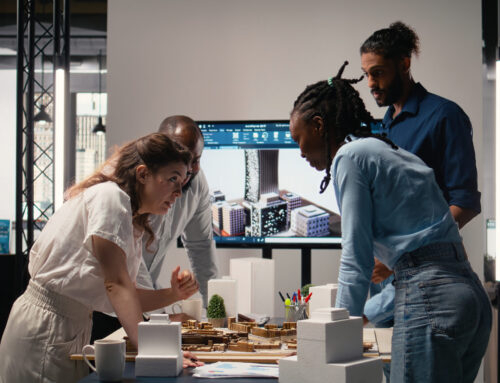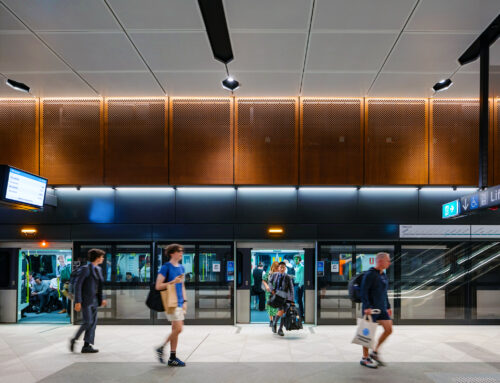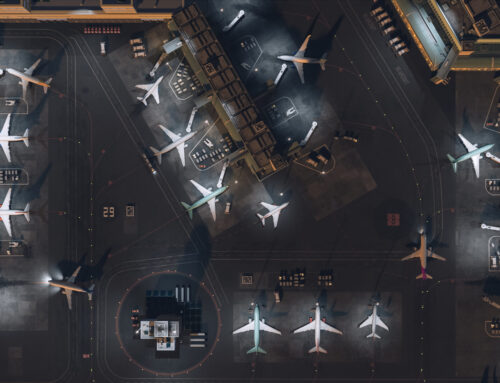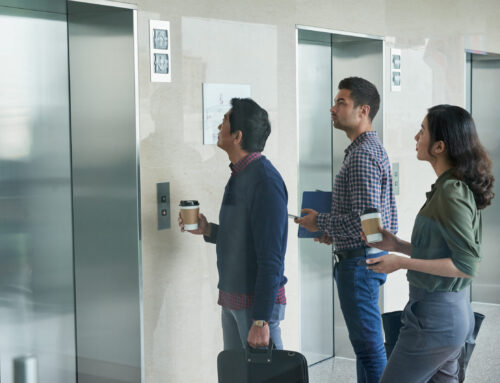Large-scale sports venues are complex. With high expectations for safety, comfort and efficiency, developers need to explore smart solutions to make them easier to manage. People-counting technology and video analytics provide real-time insights that help operators adapt in the moment and plan better for the future.
A hybrid approach
Different types of spaces need different data tools. A hybrid approach combines both people counting and video analytics. Data integration allows multiple outcomes from single sources of information.
People counting
People counting is ideal for enclosed or contained areas where entry and exit points are clearly defined. Sensors rely on this controlled flow to accurately measure foot traffic. It’s useful for corporate boxes, food and beverage spaces and retail.
Knowing how many people are in a food outlet or retail environment at any given time can inform:
- queue management
- concession opportunities
- staff allocation
- stock management.
People-counting solutions often rely on anonymous tracking methods – more acceptable in defined indoor environments.
Video analytics
Video analytics, on the other hand, is better suited for open-air environments such as stands, stadiums and hardstands.
As open-air areas don’t have fixed entry or exit points, traditional people counting is ineffective. Video analytics systems – using wide-angle or high-mounted cameras – can monitor large, dispersed crowds from a distance, even when people move freely in multiple directions.
Unlike people counting, which primarily tracks ingress and egress, video analytics can:
- monitor crowd flow
- detect congestion points
- track density levels across large spaces in real time.
Cameras for video analytics can be mounted on existing infrastructure, allowing coverage of a wide area with minimal disruption.
The technology can generate live alerts when crowd density exceeds safe thresholds, helping operators respond quickly. It can also support tasks like automated lighting cues, zone-specific messaging or targeted security deployments based on crowd behaviour.
Improve the fan experience
Delivering seamless experiences which are comfortable and delightful depends on real-time technologies working together behind the scenes. This could include bringing people counting, video analytics and operational controls into a single digital ecosystem.
Thermal comfort
Enclosed spaces like corporate boxes, lounges and conference suites are particularly sensitive to changes in occupancy. When these spaces reach high density, heating and cooling systems may struggle to maintain comfort levels.
How it works: people-counting sensors send data to an integration platform. The integration platform then shares the data to the BMS, enabling the data to be used for more than just BMS-related tasks. The BMS dynamically adjusts air flow, temperature set points and ventilation rates in response to crowd size.
Redirecting visitors to quieter zones
Congestion around popular amenities or entrances can impact the overall fan experience and create safety risks. Real-time visibility of crowd distribution enables operators to guide people more efficiently.
How it works: video analytics and people-counting data are visualised on operational dashboards. When zones become busy, digital signage or app notifications can prompt fans to use alternative facilities or access points.
Reducing wait times
Queues at bathrooms, bars and food stalls reduce satisfaction and can limit revenue opportunities. With live feedback on crowd size and movement patterns, operators can respond more quickly to demand peaks.
How it works: Data streams from various zones are analysed to detect queue formation or slow movement. This can trigger faster restocking, increased staff deployment or the opening of additional service points.
Unlock revenue with better retail and food & beverage facilities
Food, drink and retail are high-impact revenue generators when in sync with crowd movement and demand. Digital engineering brings together data streams and operational systems to help venue owners make informed, responsive decisions that drive commercial performance.
Understanding footfall around kiosks, merchandise stands and bars
The first step in optimising revenue is knowing where fans are and how they move.
How it works: People-counting sensors at entrances and exits, combined with video analytics over open spaces, provide a continuous feed of footfall data across retail and refreshment touchpoints.
Adjusting layouts, stock and staffing for high-traffic periods
Digital data has the potential to transform how precinct managers plan and resource commercial facilities.
How it works: High-traffic patterns inform decisions about where to place temporary food trucks and pop-up stalls. Stock levels and staff rosters can be scaled according to expected demand at different times or locations.
Targeting offers and promotions to busy areas in real time
Dynamic pricing and promotions offer powerful levers to boost spend, especially when informed by live data.
How it works: Digital signage and in-app alerts can be triggered when specific zones reach peak density. For example, offering a time-limited discount at an underused bar if another nearby is overcrowded.
Build a reputation for attracting top-tier performers
First impressions count – a smooth arrival and departure is essential for athletes, performers and artists as well as fans. Venues that consistently manage transport, access and crowd flows well earn a reputation as reliable, professional hosts.
Displaying real-time updates
As fans leave a venue in large numbers, exits and transport services can become overwhelmed. Live visibility helps to manage this flow more effectively.
How it works: People counting and video analytics measure how many people are moving toward each exit and transport node. This data is shared in real time with onsite screens, mobile apps or public transport operators to provide guidance around alternatives or warnings about delays.
Suggesting alternative routes and schedules
Congestion around parking and access roads can diminish the experience for everyone and delay event schedules.
How it works: Digital signage and mobile alerts can redirect drivers to less congested car parks or suggest staggered departure times. This helps to ease pressure on key access points and distribute traffic more evenly.
Understanding crowd density and identifying risk zones
The ability to track how people are moving and where they are clustering is essential for proactive crowd management and evacuation.
How it works: Video analytics systems continuously monitor live footage to detect density levels and unusual crowd behaviour. Heatmaps and zone-based alerts help pinpoint pressure points like busy exits or bottlenecks before triggering alerts when thresholds are breached. These alerts can be sent directly to security personnel via mobile devices or control room feeds.
Automating lighting to excite and calm fans
Lighting can be a powerful behavioural cue.
How it works: Lighting systems linked to crowd data can shift scenes dynamically, for example dimming to calm a congested area or brightening to encourage movement or provide greater oversight. Equally given the use of RGB LED Drivers, colour selections can be automated in response to crowd behaviour allowing for green or blue hues to settle crowds and reds or purples to fire them up.
Develop a smarter staffing plan
Labour is a significant operational cost at the same time as being one of the biggest drivers of guest satisfaction. Digital engineering helps venues strike the right balance by using real-time data to match staffing levels with actual demand. This leads to better service for performers and fans.
Dynamically deploying staff based on actual foot traffic
Rather than relying on fixed rosters, staffing can be responsive to real-time crowd movement.
How it works: People counting and video analytics provide a live picture of how many visitors are in specific zones. When a crowd builds up near a bar, stall or entrance, staff can be redeployed from quieter areas.
Minimising queues
Service speed and availability have a direct impact on fan experience and revenue potential.
How it works: By monitoring zone-specific crowd density, the system can identify when a food and beverage area is becoming congested.
Allocating cleaning and stewarding resources more effectively
Crowd data doesn’t just inform where people are, it also tells us where they’ve been and where needs to be serviced.
How it works: Traffic volume in toilets, food courts and public zones is tracked to prioritise cleaning schedules. Higher use triggers more frequent cleaning while lower-traffic areas can be serviced less often.
Improve planning and operations
The true value of real-time people movement data is realised when it’s also used for planning. Historical data enables asset owners and operators to extract patterns, assess attendance and make better decisions about future events and upgrades.
Analysing historical data to refine precinct planning
Every event generates a rich dataset of how crowds move, dwell and interact across the venue.
How it works: People counting and video analytics systems log time-stamped movement data by zone, entrance and amenity use. This information is stored and made available for review.
Identifying underused areas, peak times and future improvement opportunities
Knowing where people aren’t going can be just as valuable as knowing where they are.
How it works: Movement maps highlight dead zones, overused amenities and bottlenecks.
Informing capital upgrades and long-term precinct master planning
Capital investment decisions should be based on evidence rather than assumptions.
How it works: Longitudinal data across seasons, events and crowd types informs which infrastructure is working and which areas need improvement.
Planning differently for the next event
Each event offers a chance to refine the approach for the next one.
How it works: Post-event reviews supported by hard data provide a clearer understanding of what worked and what didn’t, including crowd flow, staffing levels and queue management.
Data-driven precincts are the future
For developers, owners and operators, people counting and video analytics provide data to make informed strategic decisions.
It improves the performer and fan experience, maximises revenue potential and improves long-term development. What better way to develop a sports precinct that’s safe, smart and responsive, now and into the future?

